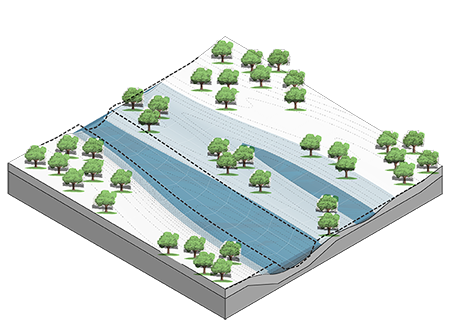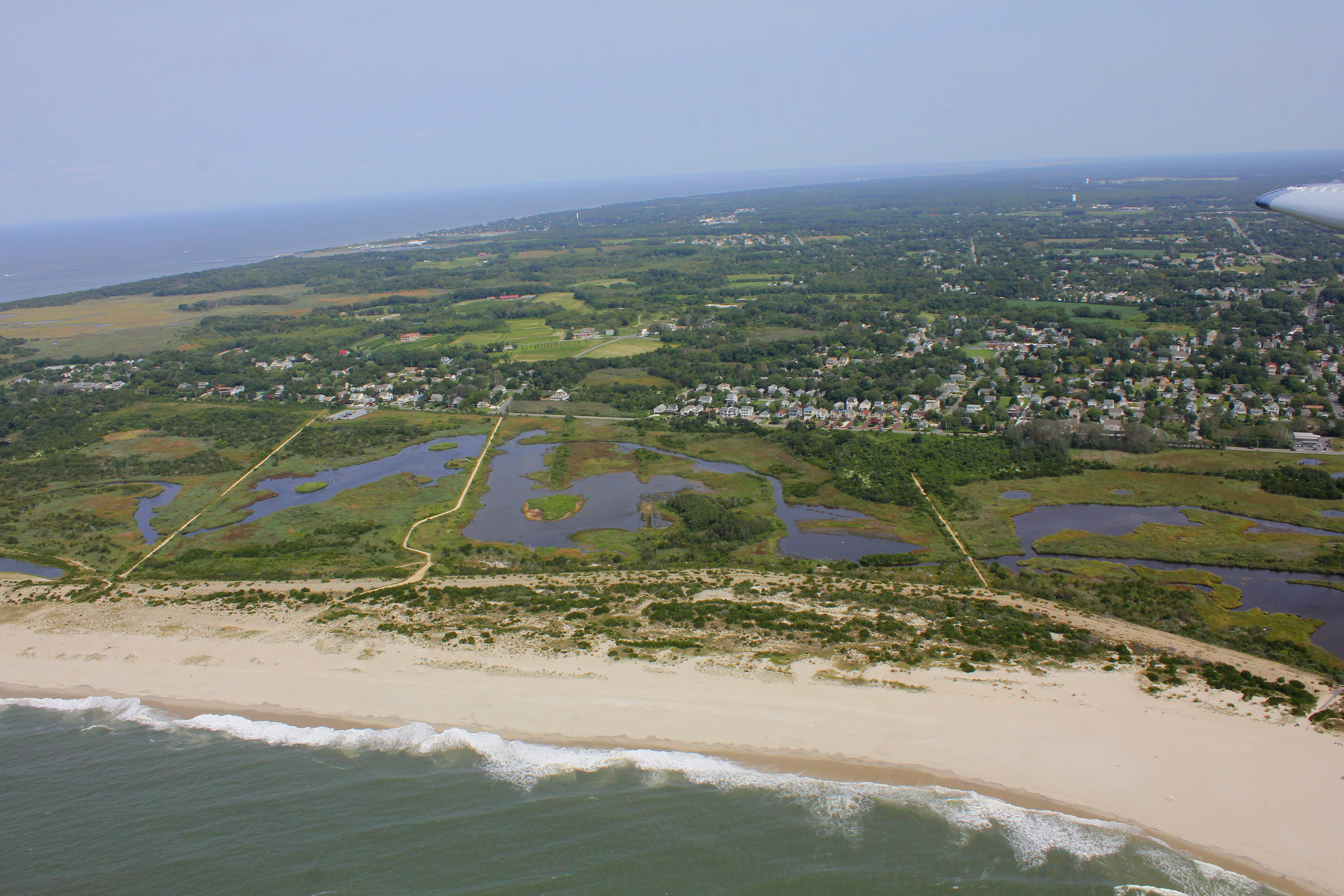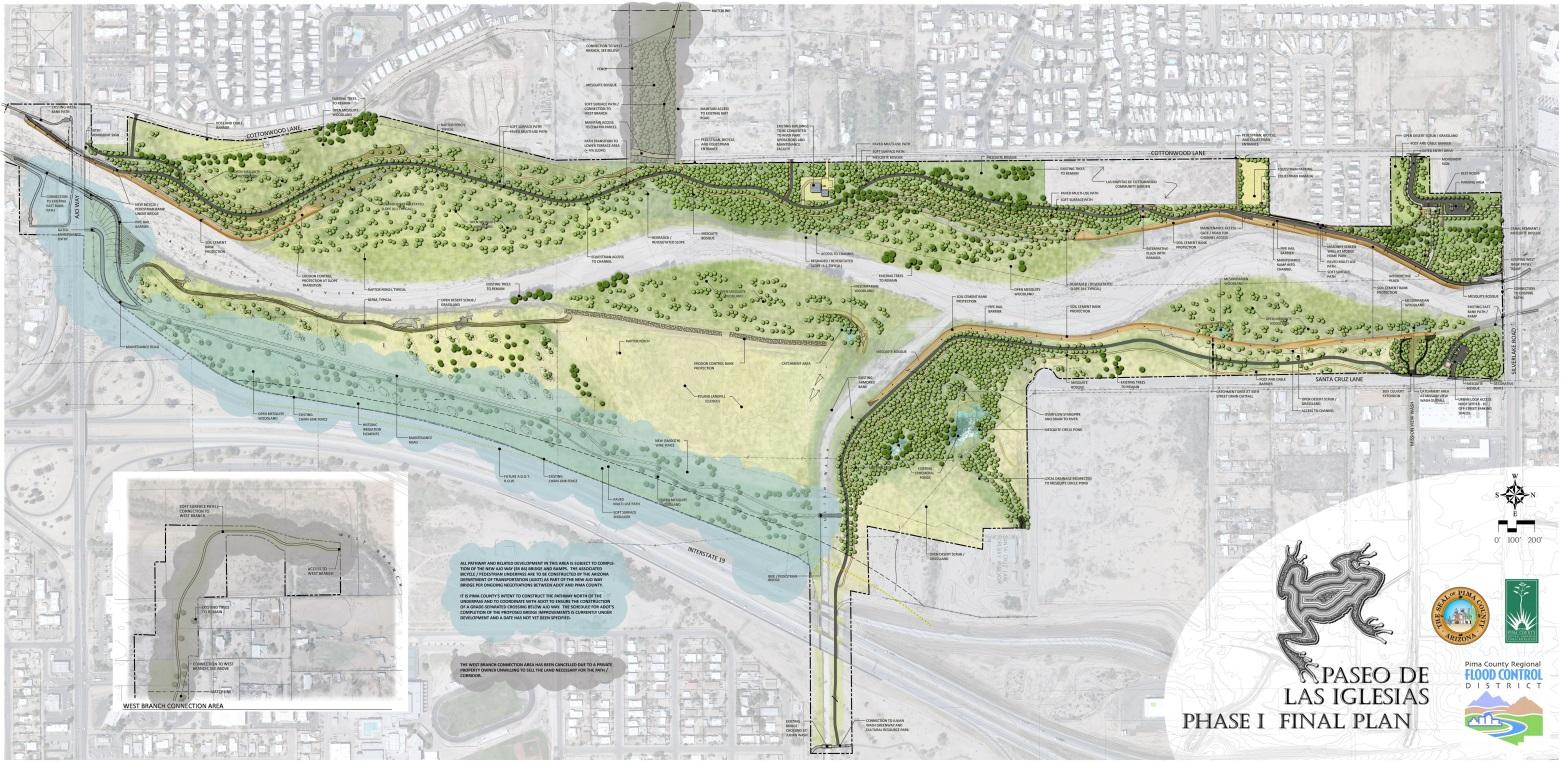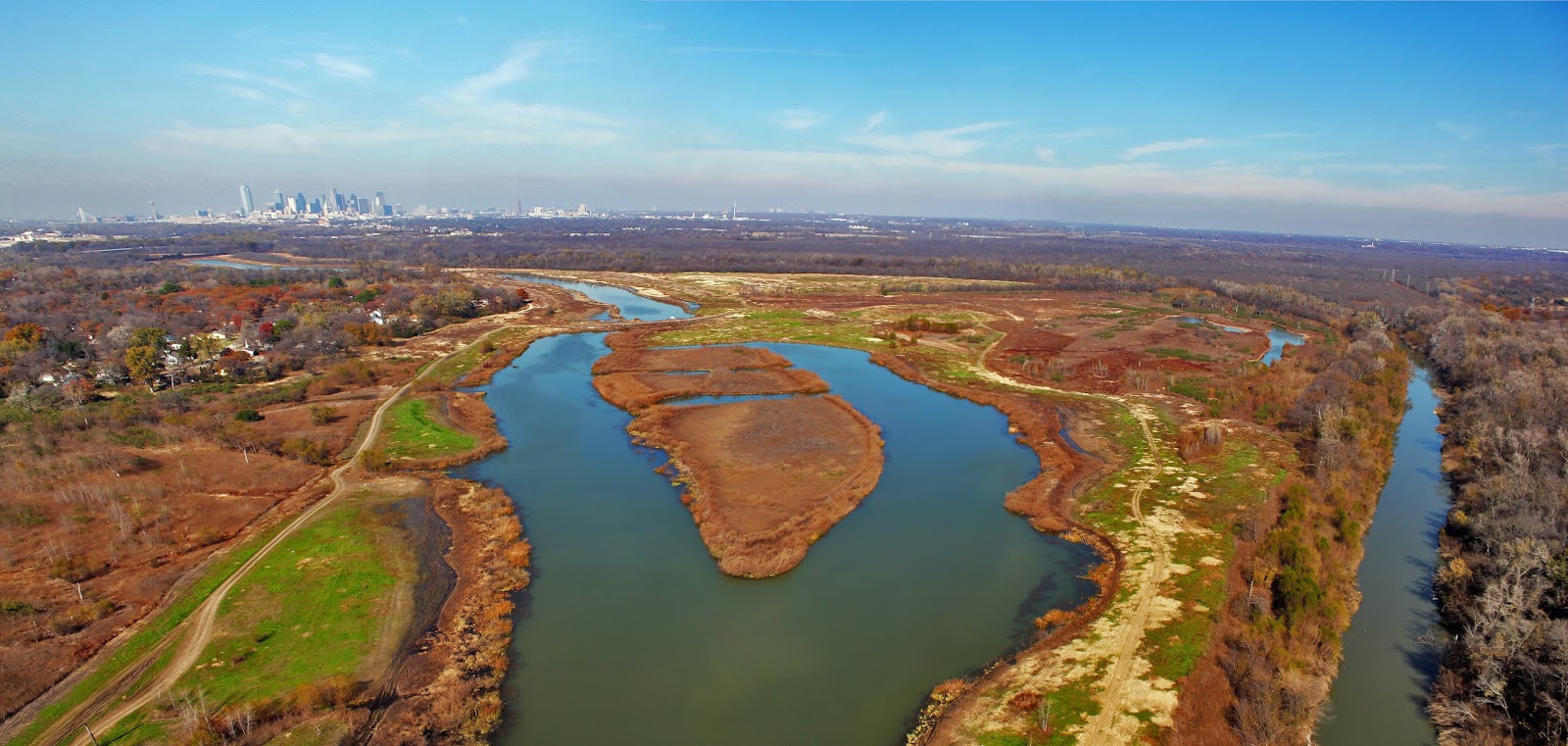Restoring Floodplain Elements
Floodplains, and the wetlands and waterways that make them up, provide a host of natural functions that may mitigate erosion, reduce flooding, revitalize local habitats, and reduce local water pollution. Banks of waterways matter because their stability, dependent largely on vegetation, affects levels of siltation and flooding. Wetlands provide absorptive capacity for floodwaters but also serve as valuable riparian habitat for plants, birds, and other species. Therefore, the benefits of floodplain feature restoration go well beyond just the reduction or mitigation of flooding, and can provide valuable ecological functions for a community.
When allowed to function naturally, the main channel of a river or stream will move and change shape over time due to the natural processes of erosion and flooding. Once encroachments into the floodplain are allowed to occur, efforts are often made to change the natural dynamics of the system, reducing the benefits provided and putting infrastructure at risk. While the restoration process is highly specific to the local context, it often begins with the reconnection of the floodplain to the main waterway or the reestablishment of a more natural hydrologic regime.
Restoring floodplain features can occur at a variety of scales and be tailored to the needs of the local community. However, significant restorative measures may be more difficult in more heavily urbanized and trafficked waterways. Restoration projects can be rolled out in smaller priority areas to reduce spot flooding, or as part of a more comprehensive initiative for larger streams and wetlands. Proper material selection and engineering is extremely important to floodplain feature restoration projects.
Siting Considerations
One major consideration in any plan for stream or river bank restoration is the amount of disruption to the water channel that has already occurred. For instance, in a highly urbanized and concretized environment, such as the Riverwalk in San Antonio or the downtown segments of the Chicago River, floodplain feature restoration is at best an unlikely prospect. In less urbanized or rural environments, however, the prospects are greatly improved. Bank stabilization depends on the ability to use natural elements like plants, tree stumps, coir fiber logs, and even stone and similar paving materials to slow the erosion of banks that have otherwise been destabilized through loss of vegetation over time. Success is heavily dependent in many cases on some professional expertise to assess what materials and placements may be most effective for the purpose, taking into account stream hydrology, slope, and other conditions. Similarly, wetland restoration can require professional biological expertise because wetlands vary considerably and involve unique hydrologic, soil, and biotic conditions, with hydrology the key factor in the ecological conditions of the system. Wetlands are essentially determined by the presence of plants, known as hydrophytes, that are adapted to waterlogged environments.

Although this strategy can be used at a watershed scale for a smaller waterway, for the most part, it is a site-level strategy best adapted to specific wetlands that are targeted for restoration or specific sections of degraded streambank or river banks where remedial measures can be employed. In an urban area retaining predominantly natural features of waterways, this could be undertaken on a neighborhood scale, but it still makes sense primarily to focus on specific areas of degradation that can be addressed with restoration strategies. Because conditions can vary even within the same small-scale watershed, success can often depend on details of implementation that are very site-specific.
Costs
Costs can depend on a number of factors. Restoration in more rural environments generally will cost less than in denser urban areas, where factors such as land acquisition costs, labor, and other elements of project implementation are likely to be more expensive, and the need to work around obstacles in the built environment may be greater. Small projects where it is feasible to marshal volunteer labor can be much cheaper than those that require professional contracting. Some projects may actually be performed by the U.S. Army Corps of Engineers with federal funds, but other more local projects may be eligible for financial support through specific grant programs of the U.S. EPA, NOAA, and the USDA’s Natural Resources Conservation Service, among other agency sources. However, most of the EPA grants, such as the Clean Water Act State Revolving Fund, are channeled through the states.
Co-Benefits of the Strategy
Many communities have capitalized on floodplain restoration efforts as a way to encourage local passive and active recreation and tie into the local transportation network in the form of bicycle and walking trails. Additionally, improved water quality, largely as the result of reduced siltation and erosion and increased natural filtration of pollutants by well-functioning wetlands, not only improves the overall attractiveness of these sites from a recreational standpoint but can also improve the biotic integrity of the stream or river, resulting in improved wildlife habitat.
Floodplain restoration efforts may help to mitigate flood intensity and losses, especially for large scale wetland restoration. Proximity to restored stream and riverbanks, and wetlands may have a positive impact on local property values as they come to be seen as community amenities.

Stream, riverbank, and wetland restoration efforts generate significant social benefits, including opportunities for local environmental education, increased availability of public open space, and improved access to the natural environment, particularly in urban areas.
Maintenance Considerations
Streams, rivers, and riverine wetlands are all dynamic systems that are bound to change and evolve over time. In disturbed environments, one can assume that ongoing maintenance of stream and river bank and wetland restoration environments may experience new problems over time, in some cases perhaps as a result of the original restoration project itself, which may introduce new problems while attempting to solve older ones. Thus, a plan for ongoing maintenance and monitoring of the restoration improvements is often vital for continued success. Problems can arise from stream channel blockages, debris, and severe weather that result in increased erosion and sedimentation and destruction of habitat. Components of an ongoing maintenance program can include regular inspections of the restored areas, clear delineation of private and public responsibilities for stream maintenance and clearance, and ongoing attention to state and federal permitting activities. Many state water resource and environmental agencies have resources available with regard to maintenance requirements and considerations.
Similar or Complementary Solutions

In selected situations, property acquisitions in flood-prone areas may pave the way for more extensive opportunities to restore natural conditions along floodways by clearing the built environment that may have limited or inhibited such options in the past. Restoration clearly is compatible with planning and zoning efforts that incorporate riparian buffers, setbacks, and similar protective measures.
Additional Considerations
Restoration efforts in general often require permits, though requirements vary state by state. Restoration projects can take a long time to be fully realized. Expect at least a few years depending on the approach being taken.
Additional Resources
FEMA has pulled together resources and information related to floodplain restoration in a flood reduction context.
The National Oceanic and Atmospheric Administration (NOAA) created a document on streams and rivers restoration techniques.
NOAA and the Environmental Protection Agency (EPA) have created a user guide and introduction of how to plan, implement, and monitor a wetland.
American Rivers. Spring 2016. Reconnecting Rivers to Floodplains: Returning Natural Functions to Restore Rivers and Benefit Communities. River Restoration Program.












